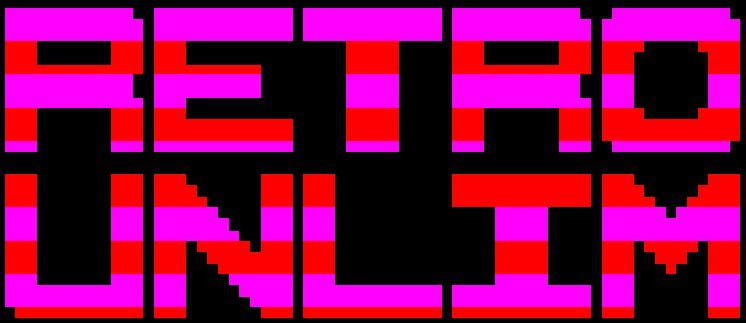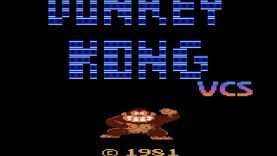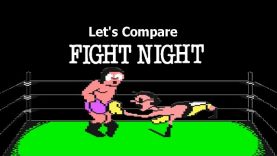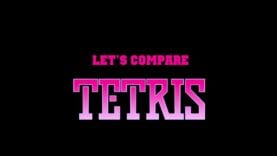Let’s Compare ( TETRIS )
Gaming History Source
Original Edit:
Video Locations:
1. Arcade ( Tengen ) 01:11
2. Arcade ( Sega ) 03:00
3. Arcade ( Bootleg ) 04:44
4. Fairchild Channel F ( Home Brew ) 06:28
5. Atari 2600 Cubis ( Home brew ) 07:37
6. Atari 2600 ( Home Brew ) 08:46
7. Atari 2600 Edtris ( Home Brew ) 09:55
8. ZX Spectrum 11:05
9. ZX Spectrum 12:16
10. BBC Micro 13:25
11. Amstrad 14:34
12. Amstrad 15:44
13. Oric Atmos 16:53
14. SAM Coupé 18:05
15. Commodore 64 19:15
16. Colecovision Quatre ( Home Brew ) 20:25
17. Intellivision ( Home Brew ) 21:34
18. MSX 22:46
19. MSX 2 ( Disney Tetris ) 23:58
20. MSX 2 25:07
21. Atari 7800 Bloc Drop ( Home Brew ) 26:17
22. FM-7 27:27
23. Apple 2 GS 28:36
24. DOS 29:45
25. NEC PC8801 31:00
26. Sharp X68000 32:10
27. Windows ( Freeware ) 33:20
28. Amiga 34:30
29. Sharp X68000 ( SEGA ) 35:58
30. Gameboy 37:08
31. Gameboy Color ( Tetris DX ) 38:17
32.Genesis ( Sega Version ) 39:28
33. NES ( Nintendo Version ) 40:37
34. NES ( Tengen Version ) 41:47
35. GBA ( Tetris Advance ) 42:56
36. GBA ( Tetris Worlds ) 44:07
37. Saturn & Playstation ( Tetris Plus ) 45:27
38. Wonderswan Color 46:46
39. SNES ( Tetris & Dr. Mario ) 48:00
40. Playstation ( The Next Tetris ) 49:46
41. PSP 52:14
42. PS2 & X-BOX ( Tetris Worlds ) 53:14
43. Windows & Mac ( Tetris Zone ) 55:47
44. Nintendo DS ( Tetris DS ) 58:07
Description Source:
http://en.wikipedia.org/wiki/Tetris
Tetris (Russian: Тетрис, pronounced [ˈtɛtrʲɪs]) is a tile-matching puzzle video game originally designed and programmed by Alexey Pajitnov in the Soviet Union. It was released on June 6, 1984,[2] while he was working for the Dorodnicyn Computing Centre of the Academy of Science of the USSR in Moscow.[3] He derived its name from the Greek numerical prefix tetra- (all of the game’s pieces contain four segments) and tennis, Pajitnov’s favorite sport.[4][5]
It is also the first entertainment software to be exported from the USSR to the US and published by Spectrum HoloByte for Commodore 64 and IBM PC. The Tetris game is a popular use of tetrominoes, the four-element special case of polyominoes. Polyominoes have been used in popular puzzles since at least 1907, and the name was given by the mathematician Solomon W. Golomb in 1953. However, even the enumeration of pentominoes is dated to antiquity.
The game (or one of its many variants) is available for nearly every video game console and computer operating system, as well as on devices such as graphing calculators, mobile phones, portable media players, PDAs, Network music players and even as an Easter egg on non-media products like oscilloscopes.[6] It has even inspired Tetris serving dishes[7] and been played on the sides of various buildings.
While versions of Tetris were sold for a range of 1980s home computer platforms as well as the arcades, it was the hugely successful handheld version for the Game Boy launched in 1989 that established the game as one of the most popular ever. Electronic Gaming Monthly’s 100th issue had Tetris in first place as “Greatest Game of All Time”. In 2007, Tetris came in second place in IGN’s “100 Greatest Video Games of All Time”.[8] It has sold more than 70 million copies.[9] In January 2010, it was announced that Tetris has sold more than 100 million copies for cell phones alone since 2005.[10]














